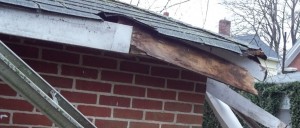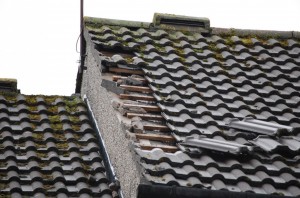Posted on November 11, 2015 in Building Maintenance,General Info,Our Service
Prepping for the cold weather
With recent news predicting a prolonged cold winter weather this year, it is important to keep in mind the damage it could cause to some of your buildings. Protech Property Solutions looks at how property managers can prepare for the worst.
The British have a poor track record of dealing with any weather condition that isn’t described as “grey”. Protecting against cold, winter weather damage is necessary for any building owner or occupier and is of even greater importance for a block of flats.
The first step to reducing the risk of unnecessary damage to your properties lies within a comprehensive pre-planned maintenance programme, which will highlight any areas that need attention long before emergency and responsive repair is needed.
Winter Water Checklist
Frost damage and cracked pipes can cause more problems than just the obvious issue of flooding. Undetected leaks can add thousands of pounds to water bills, so for properties already under budgetary constraints it is well worth checking the condition of water pipes before and after the coldest weather.
Remember:
- Regular maintenance of pipes and water systems should ensure that any problems are caught early.
- Insulate all water tanks and pipes in unheated areas like lofts, roof spaces and basements.
- Empty flats are most vulnerable to damage from burst pipes when the freezing weather starts to thaw, so be particularly aware around holidays.
- Tackle dripping taps – this may seem like a small issue, but the trickle of water from a leaking tap can freeze and completely block the pipe.
- Label stop taps and valves in order to shut off the water in the event of a burst pipe.
Winter Roof Checklist
Damaged roofs often cause further water damage, however roof care is generally neglected. In the case of snow, extra pressure is put on roofs and any loose tiles can be forced off as snow melts. Missing tiles, slates, and shingles can contribute to damaged roof timbers causing rising damp and expensive structural damage.
Along with maintaining the roof, it is important to consistently check gutters. When they are blocked with moss, they can cause the roof to retain water – which is particularly damaging in frosty weather.
Remember:
- Check for broken slates, tiles or shingles on the ground as this can indicate that there may be a problem.
- Inspect the roof space through loft access traps. Any daylight penetration could be caused by missing roof covering or damaged flashings.
Dry Rot
Poor ventilation mixed with wet weather creates the perfect breeding ground for another enemy of structures – dry rot. Dry rot is particularly lethal as it has the ability to travel through building materials other than timber, giving outbreaks the potential to spread quickly through a block of flats. For this reason additional measures (e.g. masonry sterilisation) often have to be taken when treating dry rot outbreaks over and above those necessary when dealing with outbreaks of other wood-rotting fungi. Spotting it early is key.
When inspecting your wood you should:
- Search for wood that is sunken or shrunken.
- Look for affected wood that has a flat “skin-like” covering. The skin may have a mushroom-like growth with shades of silver and grey and peels easily.
- Check wood with damp and musty odours. Look for white “cotton wool” growth on the wood. This is very important if you suspect water damage.
- Examine any dust around rotted areas. Dry rot dust is a rust red colour.
- Inspect any area with wide, soft and fleshy wide spores. The spores may have an orange and green surface.
- Look for thick grey strands, up to three millimetres in diameter, growing within the cracked section of wood. These strands may be found alone without any other symptoms of dry rot. The strands make the wood brittle and crack easily and can grow over other damp wood, possibly leading to dry rot.
- Verify dry rot by striking the middle of the infected area with a claw hammer. If it goes through the wood easily, you may have dry rot.
Conclusion
Should you find yourself in an emergency situation, the first thing to do is to define the emergency. There are two types that require urgent attention: “Stops Critical Operations” and “Threat to Life or Property”. In order to deal with these situations effectively, action plans should be in place to reinstate operations and make the property safe and secure.
There are emergencies every year that could be prevented if proper care is taken of buildings. Insulating pipes, checking roof tiles and keeping buildings well ventilated may seem arduous but it can prevent the most common causes for emergency maintenance – saving time, inconvenience and money.
Should you need assistance or advise please contact Protech Property Solutions on 0845 604 1288.
Categories
- Building Maintenance
- Cleaning
- Electrical
- Gardening
- General Info
- Our Service
- Pest
- Security
- Uncategorized
- Waste Solutions
Archive
- April 2024
- March 2024
- February 2024
- January 2024
- December 2023
- November 2023
- August 2023
- April 2023
- February 2023
- January 2023
- December 2022
- November 2022
- October 2022
- September 2022
- August 2022
- July 2022
- June 2022
- May 2022
- April 2022
- March 2022
- February 2022
- January 2022
- December 2021
- October 2021
- September 2021
- August 2021
- July 2021
- June 2021
- May 2021
- April 2021
- March 2021
- February 2021
- January 2021
- December 2020
- November 2020
- October 2020
- September 2020
- August 2020
- July 2020
- June 2020
- May 2020
- April 2020
- March 2020
- February 2020
- January 2020
- December 2019
- November 2019
- October 2019
- September 2019
- August 2019
- July 2019
- June 2019
- May 2019
- April 2019
- March 2019
- February 2019
- January 2019
- December 2018
- November 2018
- October 2018
- September 2018
- August 2018
- July 2018
- June 2018
- May 2018
- April 2018
- March 2018
- February 2018
- January 2018
- December 2017
- November 2017
- October 2017
- September 2017
- August 2017
- July 2017
- June 2017
- May 2017
- April 2017
- March 2017
- February 2017
- January 2017
- December 2016
- November 2016
- October 2016
- September 2016
- August 2016
- July 2016
- June 2016
- May 2016
- April 2016
- March 2016
- February 2016
- January 2016
- December 2015
- November 2015
- October 2015
- September 2015
- August 2015
- July 2015
- June 2015
- May 2015
- April 2015
- March 2015
- February 2015
- January 2015
- October 2014
- May 2013
- April 2013
- November 2011
- September 2011
- June 2011
- January 2011
- December 2010
- November 2010



